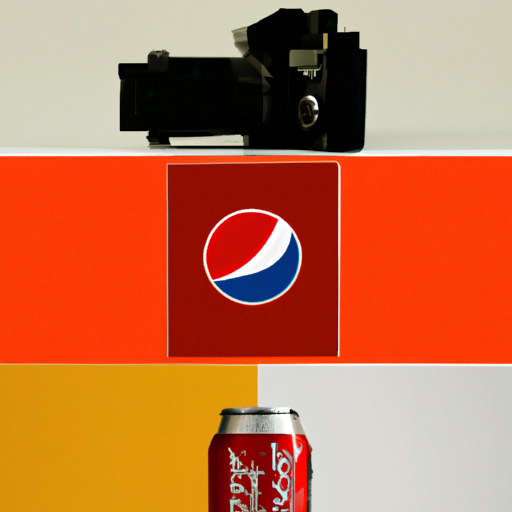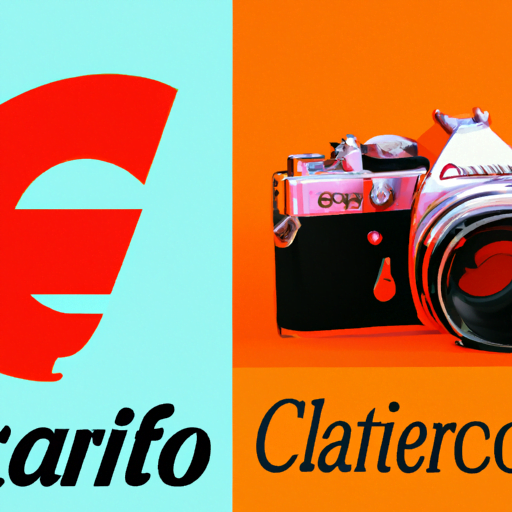
-
Table of Contents
Deconstructing Famous Logos: What Makes Them Timeless?

Logos are an essential part of a brand’s identity. They serve as a visual representation of a company, product, or service, and can often be the first point of contact between a brand and its audience. Some logos have stood the test of time, becoming iconic symbols recognized worldwide. But what makes these logos timeless? In this article, we will deconstruct famous logos to understand the elements that contribute to their longevity and success.
The Power of Simplicity
One common characteristic among timeless logos is their simplicity. A simple logo design allows for easy recognition and memorability. Take the Nike swoosh, for example. It is a simple, curved line that represents motion and speed. The simplicity of the design makes it instantly recognizable, even without the brand name accompanying it.
Another example is the Apple logo. The iconic bitten apple is a simple and clean design that has remained virtually unchanged since its creation. The simplicity of the logo reflects Apple’s commitment to minimalism and elegance in their products.
By keeping their designs simple, these logos are able to transcend trends and remain relevant throughout the years. They are easily adaptable to different mediums and sizes, making them versatile and timeless.
Memorability through Symbolism
Symbolism plays a crucial role in creating memorable logos. Symbols have the power to evoke emotions and convey messages without the need for words. The McDonald’s golden arches are a prime example of a logo that uses symbolism effectively. The arches represent the letter “M” for McDonald’s, but they also resemble a pair of welcoming arms. This symbolism creates a sense of familiarity and comfort, making the logo memorable to customers.
Another iconic logo that utilizes symbolism is the FedEx logo. At first glance, it may seem like a simple wordmark, but upon closer inspection, you’ll notice an arrow hidden between the letters “E” and “x.” This arrow symbolizes speed, efficiency, and forward movement, aligning perfectly with FedEx’s brand values.
When designing a logo, incorporating symbolism can help create a deeper connection with the audience. A well-executed symbol can make a logo more memorable and impactful.
Color Psychology and Emotional Appeal
Colors have a profound impact on human emotions and can greatly influence how a logo is perceived. Timeless logos often utilize colors strategically to evoke specific emotions and create a strong brand identity.
For example, the Coca-Cola logo is instantly recognizable with its vibrant red color. Red is associated with energy, excitement, and passion. By using this color, Coca-Cola creates a sense of excitement and joy, making their logo memorable and appealing to consumers.
On the other hand, the color blue is often associated with trust, reliability, and professionalism. This is why many technology companies, such as IBM and Intel, use blue in their logos. The blue color instills a sense of trust in their brand, making them more appealing to potential customers.
Understanding color psychology and its impact on emotions can help designers create logos that resonate with their target audience. By choosing the right colors, a logo can evoke the desired emotions and create a lasting impression.
Adaptability and Scalability
In today’s digital age, logos need to be adaptable to various mediums and sizes. A logo that looks great on a website may not translate well on a small mobile screen or a billboard. Timeless logos are designed with adaptability and scalability in mind.
One example of a logo that excels in adaptability is the Google logo. Google has a primary logo, but it also has variations for different platforms and occasions. The logo can be seen in different colors, sizes, and even animations, while still maintaining its core identity. This adaptability allows Google to maintain a consistent brand presence across various mediums.
Scalability is also an important factor to consider. A logo should look equally good whether it’s displayed on a small business card or a large billboard. Timeless logos are designed with clean lines and simple shapes that can be easily scaled up or down without losing their impact.
Case Studies: Timeless Logos in Action
Let’s take a closer look at two iconic logos that have stood the test of time and continue to be relevant today:
1. Nike
The Nike logo, also known as the “swoosh,” was designed in 1971 by Carolyn Davidson. The simplicity of the design has contributed to its longevity. The swoosh represents motion and speed, aligning perfectly with Nike’s brand values. Over the years, Nike has made minor adjustments to the logo, but the core design remains the same. The Nike logo is now one of the most recognizable logos in the world, representing athleticism, performance, and success.
2. Coca-Cola
The Coca-Cola logo has remained virtually unchanged since its creation in 1886. The iconic red color, the unique script font, and the wave-like shape of the letters all contribute to its timeless appeal. Coca-Cola has successfully built a strong brand identity around its logo, evoking feelings of happiness, nostalgia, and togetherness. The logo has become synonymous with the brand itself, making it instantly recognizable worldwide.
Key Takeaways
- Simplicity is key to creating a timeless logo. A simple design allows for easy recognition and adaptability.
- Symbolism can make a logo more memorable and impactful. Incorporating symbols that align with the brand’s values can create a deeper connection with the audience.
- Colors play a crucial role in evoking emotions and creating a strong brand identity. Understanding color psychology can help designers choose the right colors for their logos.
- Adaptability and scalability are essential in today’s digital age. Logos should be designed to look great across various mediums and sizes.
By deconstructing famous logos, we can gain valuable insights into what makes them timeless. The power of simplicity, symbolism, color psychology, adaptability, and scalability all contribute to the longevity and success of these logos. When designing a logo, it is important to consider these factors and create a design that will stand the test of time.
